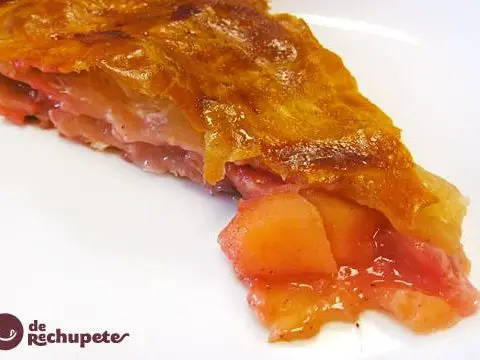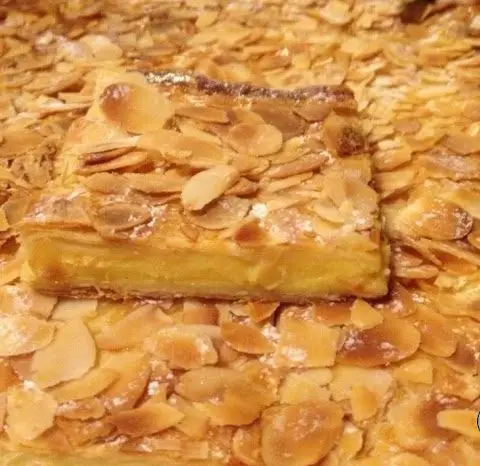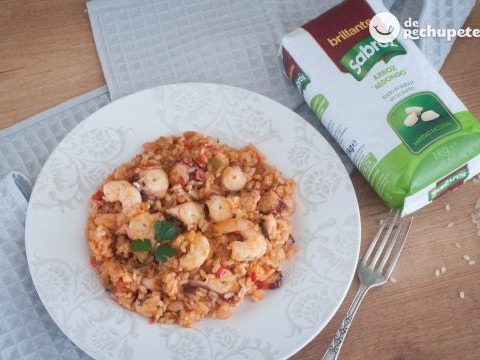
Info.
- Half
- 180 minutes
- For 8 people
- 1.3 € / person
- · ·
Chatting recently with Mariana, a Romanian friend , she told me that gastronomy in Romania was very rich and not so different from Spanish. He told me about the typical Christmas dishes, among which one stands out: the ” Sarmale ” or rolls in cabbage leaves stuffed with meat, accompanied by ” mamaliga ” (similar to polenta) and ” smântâna ” (a kind of cream of milk, more similar to cheese than to liquid cream). Proud of her gastronomy, she promised me that she would bring me a pie with which she would cook at the end of the year so that she could share it with all of you. Said and done, he presented himself at home with the plate and I assure you that it is incredible.
Romanian food has influences from Balkan, Slavic, Hungarian, German and Mediterranean aromas, especially Turkish, French and Italian. In Romania the gastronomic variety is very large and in each region we can find delicious and varied dishes, but in all of them the “Sarmale” is the main dish of the celebrations. Furthermore, this type of preparation is very typical also in other countries such as Turkey, Bulgaria, Russia, Greece, Croatia, Serbia and Ukraine. It is cooked on special occasions and parties such as Christmas, Easter, weddings and baptisms, preparing in large quantities and for many guests.
The basis of the recipe is to roll a cabbage, cabbage or vine leaf in brine, as if it were a cigar, with a meat filling (beef, lamb, chicken or pork) seasoned with garlic, onion and spices. In many cases it can be used to fill cabbage, poultry, in some cases chicken, as it is cheaper. At home we have ever prepared them like this and it has been a success, chicken recipes are always a triumph.
Rice, barley, even mushrooms that could be found in the field are also often included, as this dish emerged among farmers as a way to take advantage of leftovers. Once the rolls are made, they are boiled in a large clay pot or in the oven, depending on the area of Romania. It is quite laborious but it is an exquisite dish, you have to catch the point when making the rolls, but once one is done, the others fly away. I hope you like it.
Preparation of the Sarmale filling
- Cut the onions and red peppers into very fine pieces and pour them into a large saucepan with a drizzle of extra virgin olive oil. Fry for about 5 minutes until the onion begins to release its flavor and softens a little.
- Add the previously washed rice and lightly toast, stirring so that it does not stick. We pour the same amount of water as rice, in this case 100 ml and mix outside the fire. Stir well while cooling, two or three minutes is more than enough (the rice does not have to be done, it will be done later) and reserve.
- Chop the bacon into very small squares and combine with the minced meat. The best thing is that you ask the butcher for the pieces of meat that you like, so you will be sure of the quality of the meat that you are going to use. You usually opt for a mixture of equal parts of pork and beef, which is juicier. It is important that the butcher passes the meat through the mincer twice, since we want it to be very fine.
- Add to the minced meat the piece of bread previously dipped in water and well drained. We pour 2 tablespoons of olive oil, the finely chopped dill (it would be dry), the salt, the black pepper, the tablespoons of fried tomato sauce and the teaspoon of cimbru (can be substituted for chopped thyme). We also pour the rice with the onion and mix everything with your hands without fear, until it is well integrated. And we would already have our filling.
Preparation of Sarmale or cabbage rolls
- In this case I have used normal cabbage leaves. In Romania they use cabbage leaves in brine that already bring salt but they are not easily found here, you can look for them in supermarkets and food stores in neighborhoods with a large population in Eastern Europe. If you find them I assure you that the process will be easier since they are easier to manipulate and it would not be necessary to add salt.
- We remove the cabbage. We cut the thick part of each leaf and boil them in a large saucepan with a liter of hot water and the juice of the squeezed lemon until they are a little tender. We should not overdo it because they can break in the process of making the rolls.
- Once drained, we cut into more or less equal rectangular pieces to be able to roll the filling, we will always work one by one, as if they were spring rolls. We spread one on the cutting board and add the filling that fits in a tablespoon, right in the middle of each sheet. We roll the sheet over the filling, in the form of a roll and fold the ends inward. We should not squeeze them too much because the rice will inflate when cooked and can cause the wrapper to break, leaving it a little loose. The operation is repeated with each cabbage leaf, until all the filling is wrapped.
- We cover the bottom of a large casserole with the remaining extra virgin olive oil (about 6 tablespoons of oil) and with part of the cabbage that has been left cut into thin julienne strips, that is, into long strips. There will be a lot left over because they are almost 2 kg of cabbage. We must also use the excess scraps when making the rectangles for the rolls.
- On top of this bed of cabbage we place the rolls or Sarmale, we begin by placing them glued to the edge of the casserole, in a row making a circle and we fill the casserole with concentric circles. Do not glue them together much because they will increase in volume when cooked. Cover the first layer with part of the chopped cabbage. We place the second layer of rolls in the same way. We cover again with part of the chopped cabbage and if it is for a third batch, we repeat the process. The casserole they use in Romania is usually made of clay, low and wide, in Spain it is also very common in the villages, at my grandmother’s house it is how they usually cook.
- We finish with a last layer of cabbage. Add water until reaching the rolls but without covering them. Bring to a boil over medium heat until it reaches a boiling point and then reduce to simmer for about 2 hours.
- Once the cooking is finished we let it rest. They are about 50 approximately the size you see in the photo. We serve hot, about 6 per person. The perfect garnish is the ” mamaliga ” (similar to polenta) and everything sautéed with ” smântâna ” (a kind of milk cream, more similar to cheese than to liquid cream). I have eaten them alone, with a little sauce left over from cooking.
I assure you that they were great, 100% recommended. I think the work is worth it. Bon Appetite!
This recipe has been very successful on facebook . It seemed to me that with all the comments you have written you make the recipe even better. I have chosen the ones that I think will help complete and make it work better for you. If you want to send your photos of the step by step or the dish to the email: [email protected] or facebook , they are well received, I will upload them to the photo album above. Thanks a lot, with your work you make recipes for yummy so much better.
- Graciela Marin Melica: “ Hello, I am Argentina and in my country (also in Chile) we make this food, surely carried by the Turks. We call it children wrapped in cabbage or vine leaves, I imagine the name will be from the wrapper. This great is very easy to make. In my house we accompany it with noodles and fried rice. ”
- Cristina Daniela: “ I think that in order for them to come out with the aroma of Romania, we should put a little bit of Asturian chorizo or black pudding from Salamanca in the middle of the pot. rice with meat. It is raw, but there each one as they like. ”
- Sidonia Segarceanu: “ Try frying the rice with the onion and add a glass of water. Leave a minute for the rice to break and then add it to the meat. It improves the flavor in the pot adds what Romanians call jumari. Unbeatable ”
- Luiza Bujor: ” They are very good accompanied by cream, spicy chili and mamaliga ”
- Cristina Criss: “ In Romania there is also a recipe that does not contain meat, but rather rice, carrots, onions, mushrooms and raisins…. crazy comes out ”
- Ana Dascalu: ” A delicious recipe and I just want to say that” mamaliga “and smantana (which is a creamy cream and can also be bought from Mercadona-fresh cream) are optional, it is also eaten with bread and without cream, it is important that if you like cabbage. The recipe is also a recipe from Turkey. ”
- Marianela Luppi Klenner: “ In Chile we call it“ wrapped children ”(ugly but it is so), delicious! ”
- Sergio Hoyos Ramos: “ In Finland, due to Russian influences, they are eaten, it is always lamb, it has something sweet, honey, I don’t know and it is served with blueberries and berries as a ‘side dish’. The brutal mix. ”
- Laura Langle. “ What a wonderful recipe and memories it brings me !!! My neighbor, “Doña Aldona”, who was Ukrainian, made it when I was a girl and always invited me to eat it or brought the saucepan home to share it with my family… I will definitely try this recipe !!!! Thank you!”
- Paco Rey: ” It is a very interesting variant of the” German Kholroulade “. I think they do something similar in Argentina and they call it wrapped children . ”
- Maria Campos Camacho: “ In Costa Rica, they come from the traditional cuisine of our town and are called:“ Cabbage lunches ”They are served in tomato sauce, accompanied by rice and beans! Rich! ”






